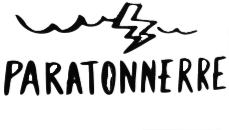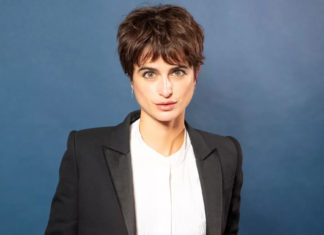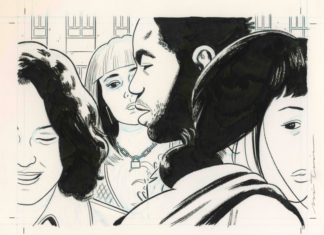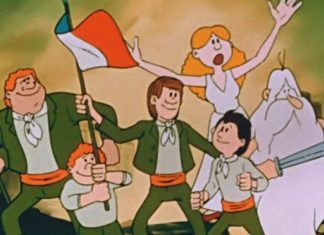Chaque super-héros a une origine et un certain nombre d’entre eux sont nés de l’influence des mythes de dieux et d’héros d’autrefois. Les films DC Comics et Marvel sont aujourd’hui de vrais succès au box-office et cela ne se terminera pas de si tôt. Les super-héros sont-ils les nouveaux hercule, Persée ou Sinbad? Nos nouveaux modèles dans la vie?
Andrew R. Bahlmann, professeur à l’Université de Snow (Utah), nous explique que super-héros ont permis de créer une nouvelle mythologie au sein de notre propre culture contemporaine.
Le héros Hercule est une inspiration de Superman mais le man of steel a-t-il d’autres modèles dans les mythes et religions?
Sans doute la plus grande connexion entre Superman et une autre figure iconique se retrouve dans les religions judéo-chrétiennes. L’idée de Superman en tant que messie est à l’origine de sa conception. Jerry Siegel et Joe Shuster étaient tous deux fils d’immigrés juifs. Superman a en fait été conçu comme le parfait héros, une sorte de super-héros messianique.
L’idée a continué son chemin dans la conception même de Superman. On retrouve même cet aspect au cinéma notamment dans Batman v Superman: Dawn of justice. L’image du corps de Superman récupéré par ses alliés à la fin du film fait référence à la descente de croix de Jésus. A l’arrière du plan, on peut voir les décombres qui forment trois croix comme celles du Golgotha durant la crucifixion du Christ.
Ce lien messianique relie également Superman à d’autres figures: à Horus dans la mythologie égyptienne, aux personnages d’Edgar Rice Burroughs, aussi aux romans d’aventure, à Prometheus ou à Samson. L’idée même du ubermensch a inspiré la création du personnage de Superman.

Pourquoi Wolverine est-il plus populaire que les autres X-men? Les super héros en colère sont-ils plus humains que les autres?
D’une certaine manière, Wolverine et Deadpool connaissent la même popularité. Au tout début, ils étaient moins développés qu’aujourd’hui mais avaient un caractère qui a attiré l’attention des lecteurs et ceux-ci se sont amusés à suivre leurs aventures.
Wolverine a rejoint une équipe des X-Men déjà bien constituée et s’est distingué d’un cyclope trop sage.
C’est également possible que son apparition ait coïncidé avec l’impopularité des autorités aux Etats-Unis à la fin des années 70-80.
Son passé mystérieux l’a rendu populaire car il laissait place à l’imagination sur ce qu’il était et ce qu’il avait fait auparavant. Les préquels l’ont connecté au Japon, au Canada et à d’autres organisations militaires et paramilitaires. Tout cela a permis un lent développement de sa mythologie et des liens à la culture américaine.
Un autre aspect de Wolverine est son côté héros solitaire. Il est en effet l’héritier de Natty Bumpoe, de John Wayne et de la figure spaghetti western de Clint Eastwood. C’est le solitaire capable d’affronter avec grande violence les autorités pour sauver les plus faibles. Cette idée se retrouve souvent dans la culture américaine: Comme entre autres John McClane dans la saga Die Hard, ou Dominic Toretto dans Fast and Furious franchise, Wolverine en est un parfait exemple.
Qu’est-ce qui rend Batman et son univers si mythiques?
Batman est probablement un des personnages les plus prolifiques de la mythologie comic. La raison principale est sa polyvalence. Il est à la fois un détective, un expert des gadgets, un solitaire et parfois même un bagarreur. Batman s’adapte aux besoins de l’histoire et pour les auteurs, il est une vraie richesse pour cela.
Sa polyvalence se retrouve également chez ses adversaires. Killer Croc est une brute, le Pengouin un truand, l’Homme mystère un intellectuel, Poison Ivy une éco-terroriste. Catwoman, quant à elle, peut à la fois être une ennemie comme une alliée. Entre toutes ces différentes caractérisitiques et la richesse des autres personnages qui secondent Batman, un tel univers a une quantité infinie d’histoires et de situations.
Avec des auteurs comme Frank Miller (The Dark Knight Returns) et Alan Moore (The Killing Joke), Batman est devenu plus sombre et plus violent. Pensez-vous qu’il est plus proche de ses ennemis que des citoyens qu’il protège?
Depuis le début des comics, Batman est une figure sombre. Il est inspiré des romans noirs tels que ceux d’Edgar Allan Poe. Mais avec le temps, avec les codes des comics et l’arrivée de Robin, le ton s’est apaisé. Le côté noir s’est complètement éteint avec la série télévisée des années 60.
The Dark Knight Returns (1986) est d’une certaine manière le retour aux sources de  Batman. Watchmen, publié la même année, a lui aussi permit un changement dans la conception du superhéros des comics. The Killing Joke, sorti deux ans plus tard, a renforcé ce retour du héros plus sombre.
Batman. Watchmen, publié la même année, a lui aussi permit un changement dans la conception du superhéros des comics. The Killing Joke, sorti deux ans plus tard, a renforcé ce retour du héros plus sombre.
Dans beaucoup d’aspects, Batman a plus en commun avec ceux qu’il affronte que ceux qu’il protège. Sa perte d’innocence avec la mort de ses parents a provoqué cette cassure avec les citoyens de Gotham. Son obstination à garder le mystère sur son identité l’éloigne encore plus d’eux. Son comportement, sa colère sans fin et son choix d’adopter les méthodes les plus extrêmes le rapproche finalement de ceux qu’il combat. Il ne fait plus partie de la population de Gotham, il réside dans les ténèbres.
Le Joker est le plus grand ennemi de Batman. Y’a-t-il une interdépendance entre eux? Qu’est-ce que le Joker représente?
Le Joker représente la part négative de Batman. Pour cette raison, le personnage a connu des changements au cours des années. Depuis Jack Nicholson à Mark Hamill, Heath Ledger en passant par Jared Leto au cinéma et à la télévision, le côté fou du Joker a changé. Son côté farceur a dû s’adapter au temps tout comme Loki dans la mythologie nordique. Le Joker s’apparente à Coyote, à Raven, à Anansi et à d’autres personnages de mythologies.
Tout cela a créé du lien entre lui et Batman. Le Joker est ce que l’on pourrait appeler dans la tradition freudienne un superego de Batman. Il a fait le choix d’une vie de liberté nourrie par ses méfaits alors que Batman fait tout son possible pour maintenir l’ordre. Ainsi, les deux incarnent deux aspects de la psychologie qui s’affrontent. Le lecteur devient d’une certaine manière un arbitre. Avec de tels vices, le rôle du Joker est crucial dans la mythologie Batman.

Nous pouvons retrouver des influences de l’affrontement entre le Docteur Jekyll et Mister Hyde dans les personnages de Hulk et de Double-Face. Comment la psychologie joue un rôle dans les mythes, les légendes et les super-héros?
Les superhéros, qui participent à l’édification d’une mythologie, permettent de donner du sens au monde qui nous entoure. Le folklore inclue les mythes et les légendes mais aussi d’autres aspects sociaux de notre société. Tout cela nous permet de mieux comprendre la psychologie d’une culture. Dans la plupart des cas, il y a cet affrontement entre le bien et mal, entre le bon et le mauvais, entre le positif et le négatif. Nous pouvons retrouver cela dans toutes les mythologies du monde entier. Les superhéros sont les nouveaux héros de ces mythes et perpétuent notre interrogation sur le sens de la vie.
A travers ces histoires, nos points de vue existentiels peuvent varier. Les versions cinématographiques de Batman et de Star-Lord de Guardians of the Galaxy prouvent par exemple qu’il y a différentes façons de vivre la perte de ses parents. Alors que Bruce Wayne devient assoiffé de vengeance, réfugié dans les ténèbres, prêt à surgir; Peter Quill, quant à lui, semble compenser la mort de sa mère en minimisant la méchanceté et en adoptant une attitude plus tranquille et jovial. Les deux ont connu les mêmes événements tragique mais sous un différent angle. Cela leur donne un point de vue extrêmement différent du monde. Aucun des deux est mauvais ou bon. Les deux peuvent en fait nous aider à percevoir le monde.
J’affirme que ces histoires ont presque toutes emprunté des aspects de la psychologie humaine. Lorsque nous cherchons à mieux comprendre nous-mêmes, cela arrive que nous nous inspirions des légendes et des contes.
Thor et Wonder Woman sont des dieux avant d’être des super-héros. Sont-ils de parfaits liens entre les anciennes mythologies et celles d’aujourd’hui?
Ce qui me fascine à propos de Thor c’est comment les comics et les films ont pu retranscrire fidèlement ce que nous savons sur la mythologie nordique.
A propos de Wonder Woman, elle est liée à la mythologie grecque par sa mère Hippolyta mais aussi à la pièce de théâtre Songe d’une nuit d’été de Shakespeare. Alors qu’on ignore si elle fait partie de la mythologie grecque ou romaine, son éducation d’amazone rappelle les légendes classiques.
Cependant, je ne suis pas sûr qu’ils sont les liens entre les anciens mythes et ceux d’aujourd’hui. Je dirais qu’il y a une évolution mythe après mythe ce qui a permit l’édification des héros. Autrefois, il y avait les épopées et les sagas comme ceux du roi Arthur et de Charlemagne. Plus tard, il y a eu les récits des révolutionnaires et du Far West. Avec les évolutions culturelles, les mythes ont eux aussi changé.

Même Thor a dû évolué pour faire place à de nouveaux mythes. Dans les comics, il est beaucoup plus un héros modeste que dans la mythologie nordique. En fait, dans son premier film de l’univers Marvel, il renonce à ses traditions pour devenir un héros moderne.
Evidemment, tous ces changements résultent de multiples interprétations des histoires et tout cela a construit une structure qui les a reliées entre elles.
Avec les comic books et les films, pensez-vous que les super-héros seront toujours une grande source d’inspiration?
J’ai longtemps pensé que les super-héros allaient être des sujets de passage. Mais avec ce travail sur leurs origines, les auteurs nous emmènent vers des événements historiques qui se sont déroulés avant même la première apparition de Superman.
Aujourd’hui, il est évident qu’ils dureront beaucoup plus que je ne l’aurais imaginé. Il y a des films de super-héros depuis les années 50 et depuis 1977, presque chaque année un nouveau super-héros arrive sur les écrans américains. Ils sont même à la télévision depuis plusieurs années. En plus d’être dans les comics, les super-héros continueront à être les sujets de récits pendant encore un long moment.
Aussi longtemps que ces histoires seront racontées, elles serviront d’inspirations pour beaucoup. Leur présence au cinéma a permit aux super-héros d’être mieux connus du public. Certains personnes ne prêtaient même pas attention à eux auparavant.
Il se peut qu’il y ait moins d’histoires de super-héros mais je n’imagine pas que leur importance stoppera du jour au lendemain. Je reste persuadé que les super-héros resteront une source d’inspiration pour les prochaines dizaines d’années.

Pour en savoir plus: https://www.amazon.com/Mythology-Superhero-Andrew-R-Bahlmann/dp/1476662487
Every superhero has his origin story, and a surprisingly large number of modern ones owe those origins to myths of gods and heroes who existed millennia before their cultural descendants. The DC comics & Marvel films are clearly hits and it won’t finish soon. Are superheroes the new Hercules, Perseus or Sinbad? Our new models?
Andrew R. Bahlmann, professor at Snow College (Utah), explains that superheroes have given rise to a collective mythology familiar in popular culture worldwide.
Hercules is used as a foil to Superman but does the Man of Steel have other influences in other mythologies/religions?
Perhaps the biggest connection between Superman and another mythology is the messiah figure from the Judeo-Christian religions. This idea of Superman as messiah stretches back to his conception. Jerry Siegel and Joe Shuster were both children of Jewish immigrants who conceived of Superman as a perfect hero, a sort of superhero Messiah for the culture.
This idea has been a part of Superman’s concept for decades since, even in his most recent onscreen depiction. The messianic Superman was interwoven into Batman v Superman: Dawn of Justice. The image of lowering Superman’s body at the end of the film show a strong connection to the lowering of Jesus from the cross. In the background at that moment in the film, the rubble even forms three crosses, matching the three crosses on Golgotha during the crucifixion of Christ.
This messianic connection also ties Superman to other mythological figures that connect to that idea. Horus from Egyptian mythology, characters from Edgar Rice Burroughs, pulp novel characters, Prometheus, Sampson, even the idea of the ubermensch had some influence on how Superman was created.

Why is Wolverine more popular than the other X-Men? Do angry superheroes seem to be more human?
In part, Wolverine and Deadpool followed a similar path to popularity. Both were originally less developed than they became. They had a design that sparked interest in readers and led to a character that was partly defined by the popularity they had in stories.
Wolverine came to the X-Men after the original team was developed. He became a valuable foil to the uptight Cyclops. It’s also possible that his introduction coincided with some of the antagonism with authority present in America during the late 70s and 80s. 
It also helped his popularity that his backstory remained unclear, allowing for speculation about who he was and what he did in the past. Prequel stories connected him to Japan, Canada, and various military and paramilitary organizations and events. All of this led to a slowly unfolding mythology surrounding the narrative that allowed him to adapt to attitudes of the culture in America as it evolved.
One of the things that connects well with the character is his lone gunslinger attitude. He shares some of the same mythology as Natty Bumpoe, John Wayne, and Clint Eastwood’s spaghetti western persona. The solitary figure with authority issues who is willing to use extreme violence to save the innocent and worthy from the sinister and unworthy is celebrated in American culture. John McClane from Die Hard, Dominic Toretto from the Fast and the Furious franchise, these kinds of characters are prolific in American fiction and Wolverine is a strong example of this kind of character in superhero stories.
What makes Batman and his universe so mythic?
Batman is quite possibly one of the most prolific superheroes in the mythology. It seems likely that one of the biggest reasons for this is his versatility. He can play the part of the detective, the gadget user, the gunslinger, even the brawler as the story requires. Because he adapts to the needs of the story he can be whatever the storytellers need him to be.
His versatility extends to his rogues gallery as well. Killer Croc is a brawler; the Penguin is a mobster, the Riddler plays on issues related to intellect, Poison Ivy is an eco-terrorist. Catwoman is able to play the line between villain and hero. Between Batman’s versatility, the versatility of his foes, and the strength of his supporting cast, he has infinite possibilities for storylines, situations, and whatever else a story might need.
With authors such as Frank Miller with The Dark Knight Returns and Alan Moore with The Killing Joke Batman became darker and more ruthless. Do you think he’s closer to his enemies than the citizens he protects?
From the beginning Batman was a dark figure in comics. He was inspired by noir and gothic genres. Early writers would sit outside Edgar Allan Poe’s house as they thought up story ideas. Over time, as the comic code came into effect and with the introduction of Robin, his tone shifted toward the culmination of his campiness with the 1960s television series.
1986’s The Dark Knight Returns is in some ways a return to Batman’s roots. Coupled with  Watchmen, which was published the same year, it represented a shift in superhero comics in general. The Killing Joke, coming two years later, helped to cement this move back to a darker character.
Watchmen, which was published the same year, it represented a shift in superhero comics in general. The Killing Joke, coming two years later, helped to cement this move back to a darker character.
In many ways, Batman does have more in common with his nemeses than the people he protects. His loss of innocence with the death of his parents is played out as an event that separates him from the citizens of Gotham. His effort to maintain the mystery of the Dark Knight further distances him from them as well. His flair for the dramatic, his simmering anger, his willingness to go to extremes does line him up more with those he fights than those he protects. He doesn’t belong with the citizens of Gotham. He belongs in the shadows.
The Joker is definitely the biggest of Batman’s enemies. There is a symbiosis between them. What does the Joker represent?
The Joker is a clear negative image of Batman. Because this is true this means his character has also needed to be adaptable. While the core insanity of the character is constant from Jack Nicholson through Mark Hamill and Heath Ledger to Jared Leto in films and his various incarnations in comics, he has also changed the way this insanity manifests.
In a way this is appropriate to the kind of character the Joker is. As a trickster figure he needs to be adaptable, much like Loki in Norse mythology. The Joker is a story character similar to Coyote, Raven, Anansi and others from various mythologies around the world.
In some ways, his role as the primary trickster in DC’s mythology puts him at psychological odds with Batman. The Joker is similar in type to Freud’s concept of the id while Batman strives to be a superego. Thus, while the Joker lives a life of freedom to indulge in his unbridled urges, Batman strives to always maintain control. In this way the two serve as the two warring sides of the psyche with the reader as a sort of ego in between the two warring ideologies. While this comparison is potentially flawed, in broad strokes it helps explain the role the Joker plays in Batman’s mythology.

We can also find some of Dr. Jekyll and M. Hyde’s influences in the Hulk and Two Face. How much of a role does psychology play in mythology, legends and superheroes?
Superheroes fill the need for a commonly shared mythology by which we can try to make sense of the world around us. Folklore, which encompasses mythology and legend as well as other socially connective creations, is frequently a way to see into the psychology of a culture. One of the biggest issues facing nearly every culture is that of good versus evil, right versus wrong, positive and negative. We can see that played out in mythologies the world over. Superheroes are just the newest mythology to engage with the questions of meaning in life.
Through these stories we look at different ways we can handle the intensity of life. The cinematic versions of Batman and Star-Lord from Guardians of the Galaxy show different ways to deal with the loss of parents. While Bruce Wayne becomes a man of vengeance, darkness, and brooding; Peter Quill seems to have adjusted to the loss of his mother by downplaying the badness in life and adopting a more relaxed and jocular attitude. Both face the same issue but from different angles. It leads to drastically different views of the world. Neither is necessarily good or bad. Both are valuable in the way they can help us see the world.
I would argue that these stories are almost always about some aspect of the psychology of humans. When we seek to understand ourselves better it’s not uncommon for us to turn to our legends and tales to find meaning.
Thor and Wonder Woman are gods before being superheroes. Are they the perfect links between ancient mythology and the new one?
What fascinates me about Thor is how much the patterns in the comics and films of the superhero version of the character mirror well aspects of what we know about early Norse mythology.
In the case of Wonder Woman, not only does her mother Hippolyta connect her to Greek mythology, but to Shakespeare’s Midsummer Night’s Dream as well. While she herself has no clear analog in Greek or Roman myth, her Amazonian upbringing hearkens well back to the Classic legends.
However, I’m not sure that they’re where we can necessarily see the links between what came before and what is. I would suggest that we have seen a move from myth to myth that connects to archetypical mythical figures. Early on, we saw epics and sagas. These gave way to the romances of King Arthur and Charlemagne. Later, tales of revolutionaries and the American west led to action and adventure stories. As the cultures changed, the myths changed to match them.

Even Thor, as similar as the structure may be, has been changed somewhat to match the needs of the new mythology. He is now a much more humble hero than he was in the Norse myths. In fact, his first film in the Marvel Cinematic Universe is about teaching him to renounce the pride of his Norse tradition to be a more modern hero.
Of course, any effort to trace something as changing as the history of myth and folklore results in a variety of interpretations of how the stories that make up these frameworks interact with each other.
With comic books and film, do you think superheroes will always be a source of inspiration?
I used to think that superheroes were a temporary part of the fabric of storytelling. While we can trace them back to a specific historical origin, we also see their origins before Superman’s first appearance.
Evidence suggests that the influence of the superhero has lasted longer than I originally thought. There have been superhero films since the 1950s and almost every year has seen the release of a superhero film in the United States since 1977. They have been a part of the television landscape for years as well. When we include their presence in comics, superheroes have been and will continue to be a part of the narrative landscape for a long time to come.
As long as these stories are told, they will serve as an inspiration to many. The recent exposure they receive in cinema furthers their influence to many who may have otherwise disregarded the value in their stories.
While we may see an eventual decrease in representations of superheroes, I don’t foresee a time when they will cease to be important. I expect superheroes will be an inspiration for decades to come.

Further reading: https://www.amazon.com/Mythology-Superhero-Andrew-R-Bahlmann/dp/1476662487







